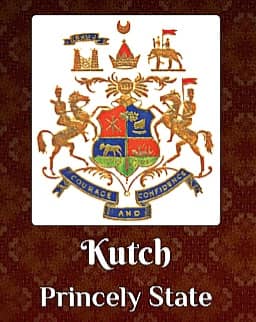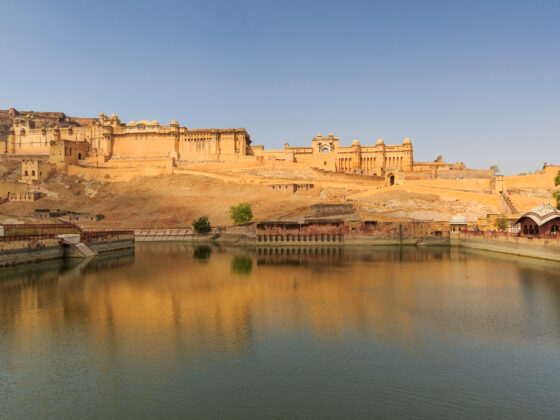Kutch Princely State: A Legacy of Valor and Cultural Heritage

Introduction
The Kutch Princely State, located in present-day Gujarat, India, held a significant position in Indian history due to its strategic location, governance, and cultural heritage. Known for its Rajput rulers, thriving trade networks, and magnificent forts, Kutch remained a prominent independent state before merging with the Indian Union in 1948. Its rulers, the Jadeja Rajputs, played a crucial role in shaping the region’s political, economic, and cultural landscape. This article explores the fascinating history, administration, and cultural legacy of the Kutch Princely State.
Origins and Early History
The Jadeja Rajputs founded the Kutch Princely State in the 13th century, tracing their lineage to Lord Krishna’s Yaduvanshi clan. Rao Lakha established his rule in 1147, but it was Rao Khengarji I who unified the Kutch region in 1540 and laid the foundation of the princely state. The Jadeja rulers expanded their territory and built a strong military presence, ensuring Kutch’s independence from external invasions.
Kutch’s rulers also fostered diplomatic ties with the Mughal Empire and later with the British to safeguard their kingdom. The state’s strategic location along the Arabian Sea made it a hub for maritime trade, connecting India with Africa, Persia, and the Middle East.
Governance and Administration
The Kutch rulers followed a monarchical system, with the Maharaja of Kutch holding supreme authority. However, they maintained a structured administrative framework, ensuring efficient governance. Some key aspects of their administration included:
- Revenue System: Kutch had a well-developed taxation system based on land productivity and trade earnings.
- Military Organization: The rulers maintained a strong army to defend the state from invasions and internal conflicts.
- Judicial System: Local village councils, known as Panchayats, resolved disputes, while the Maharaja acted as the highest judicial authority.
- Trade Policies: Kutch established thriving trade relations with Persian, Arab, and African merchants, making it a prosperous commercial center.
Under Rao Lakhpatji’s rule in the 18th century, Kutch reached its peak in economic and cultural development, strengthening ties with European traders.
Cultural and Architectural Legacy
Kutch flourished as a center of art, architecture, and cultural heritage under its princely rule. The rulers promoted traditional crafts, literature, and architectural advancements, leaving behind a legacy that still thrives today.
1. Magnificent Palaces and Forts
The Jadeja rulers built several architectural marvels that showcase a blend of Rajput, Mughal, and European influences. Some notable structures include:
- Prag Mahal: A stunning palace built in Italian Gothic style, featuring intricate carvings and a grand Durbar Hall.
- Aina Mahal: Also known as the “Palace of Mirrors,” this structure exhibits exquisite Indo-European artistry.
- Bhujia Fort: A historic fortress that played a crucial role in defending Kutch from external invasions.
2. Rich Handicrafts and Folk Traditions
Kutch gained fame for its textile and handicraft traditions, including:
- Bandhani (Tie & Dye): A vibrant fabric-dyeing technique unique to Kutch.
- Ajrakh Printing: An ancient block-printing art form with Persian and Sindhi influences.
- Kutchi Embroidery: Detailed needlework used in garments and home decor.
Folk music and dance, such as Garba, Dandiya Raas, and Bhavai, remain integral to Kutch’s cultural identity.
Kutch Under British Rule
During the 19th century, Kutch came under British influence while retaining its princely status. The British recognized Maharaja Pragmalji II as the ruler in 1860, establishing a political alliance to ensure trade security. The region continued to flourish under indirect British rule, but increasing nationalistic movements led to the eventual merger with India.
Kutch became one of the first princely states to accede to the Indian Union on 15 August 1947, officially merging with India in 1948 under Maharaja Vijayaraji.
Modern-Day Kutch and Its Heritage
After independence, Kutch became a part of Gujarat in 1960, yet it continues to preserve its royal heritage. Some aspects that highlight its legacy include:
- Rann of Kutch Festival: A grand annual celebration showcasing the region’s art, music, and dance.
- Heritage Tourism: Visitors explore historical forts, palaces, and vibrant handicraft markets.
- Economic Growth: Kutch remains a key center for textiles, salt production, and trade.
The earthquake of 2001 caused significant damage to many historical sites, but restoration efforts have revived the grandeur of Kutch’s heritage.
Conclusion
The Kutch Princely State stands as a remarkable chapter in India’s history, reflecting resilience, cultural brilliance, and economic prosperity. From its Rajput rulers and thriving trade networks to its architectural marvels and rich traditions, Kutch’s legacy continues to captivate historians and travelers alike.
Even today, the spirit of Kutch lives on through its vibrant art, music, and festivals, making it a treasure trove of India’s diverse heritage. Whether you are a history enthusiast or a traveler seeking cultural experiences, Kutch remains an unmissable destination that offers a glimpse into its glorious past.







